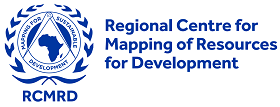Land use and land cover change (LULCC) is a global multi-scale process affecting ecosystems, with potential implications for ecological processes and for the biological communities that support them. LULCC can potentially affect protected areas particularly where their biodiversity and ecosystem functions depend on long-term ecosystem stability.

Credits Claudia Capitani
The role of protected areas in mitigating the adverse effects of human development on nature has been proved by several studies. However, ecosystem changes following land use and cover change can undermine protected areas ability to fulfil their conservation objectives.
While protected areas can mitigate the negative effects of human pressures, there is evidence that they are often extremely pressured on their borders. As LULCC isolates protected areas from their surrounding landscapes, the challenge is to identify management opportunities that maintain ecological function and connectivity while minimizing restrictions on human land use.
On the other hand, land-use restrictions in protected areas (PAs) might have unintended spillover effects on non-target, neighboring areas. In the case of leakage, land-use change that would have occurred in the PA is displaced to an unprotected area where it would not have otherwise occurred. The resultant ‘leakages’ can offset benefits achieved inside PAs, confound impact assessments, and exacerbate the problems of opportunistic protection of lands.
The recent Covid19 pandemic has highlighted another potentially devastating impact of LULCC on wildlife: the spread of zoonosis. LULCC can induce environmental stressors that determine the abundance and distribution of wildlife, shape the dynamics of wildlife exposure and susceptibility to pathogen infection, drive pathogen shedding or excretion from wildlife, and create novel contact opportunities facilitating pathogen spread between species (spillover), ultimately leading to human infection and further spread.

Copernicus Global Land Cover annual maps are released since 2015 reference year.
Earth Observation data and derived mapping tools can support detecting land cover and use changes over large areas over a long period or recent time. However, sometimes land use change or intensification may not be detected by satellites, and most importantly EO data often cannot unveil drivers of those changes. Recently spatial analysis has been coupled with participatory approaches to better investigate the underlying and proximate drivers for these changes. Direct drivers vary from demand for timber and biofuel to agricultural land expansion, both driven by increasing local population as well as global demand. However, the roots for unsustainable resource uses has to be found in weak governance, lack of law enforcement and uncertainty on land tenure.

Land use and cover dynamics. Copyright 2011 by Sunny W.H. Reetz and Bernhard Brümmerx



